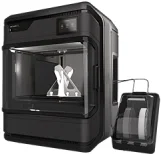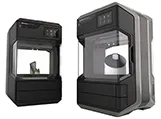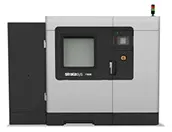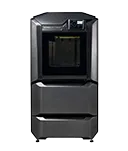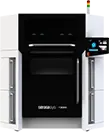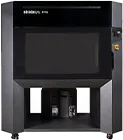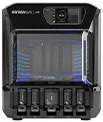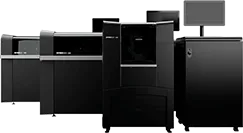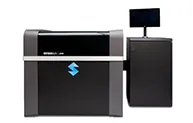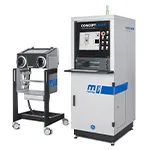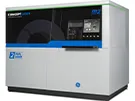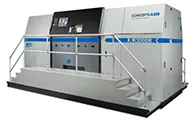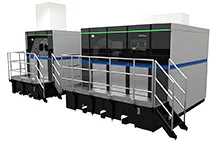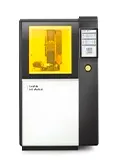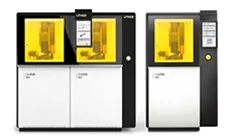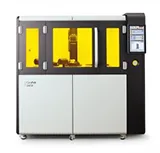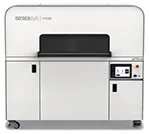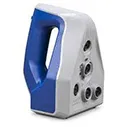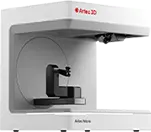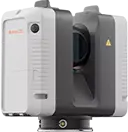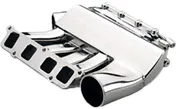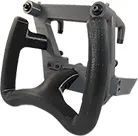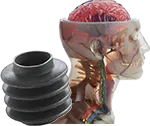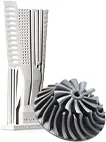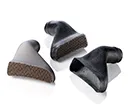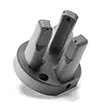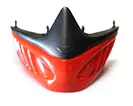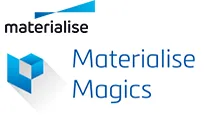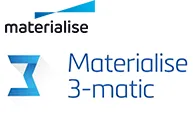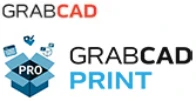The rise of 3D printing technology has made significant waves across a range of industries, forever changing how products are designed, prototyped, and manufactured. Metal 3D printing, in particular, has garnered significant attention as a transformative solution in the modern manufacturing landscape, offering numerous advantages such as design flexibility, material efficiency, and rapid production.
Objective3D, Australia and New Zealand’s leading provider of Stratasys, GE Additive, Lithoz, and Artec 3D Printer and 3D Scanner solutions, is committed to helping businesses unlock the full potential of metal 3D printing technology, providing expert advice, state-of-the-art equipment, and unparalleled support to drive innovation and success in the manufacturing sector.
In this in-depth blog post, we will explore the fascinating domain of metal 3D printing, delving into its many applications, benefits, challenges, and future trends in the manufacturing industry. By offering a comprehensive understanding of metal 3D printing technology and its potential impact on manufacturing processes, we aim to equip businesses with the knowledge required to harness this state-of-the-art solution for improved efficiency, innovation, and growth.
By providing a detailed examination of metal 3D printing technology, its applications, and its implications in the manufacturing industry, this blog post aims to inform and inspire businesses to explore the potential benefits of adopting this ground-breaking solution as part of their operations.
1. The Fundamentals of Metal 3D Printing Technology
Metal 3D printing, also known as additive manufacturing, involves the fabrication of metal components by layering material, usually in the form of powder or wire, according to a digital 3D model. There are several key metal 3D printing technologies employed in the manufacturing industry, each with its unique capabilities:
Powder Bed Fusion (PBF): In PBF, a focused energy source, such as a laser or electron beam, selectively melts and fuses metal powder to form the desired shape. This process includes Selective Laser Melting (SLM), Direct Metal Laser Sintering (DMLS), and Electron Beam Melting (EBM) technologies.
Directed Energy Deposition (DED): DED utilises a nozzle to deposit metal powder or wire onto a substrate, which is then melted by a laser or electron beam. DED technologies include Laser Metal Deposition (LMD) and Electron Beam Freeform Fabrication (EBF3).
Binder Jetting: Binder Jetting involves a print head depositing a liquid binding agent onto metal powder layers, which solidify into the desired shape. The powder bed is then heated to fuse the metal particles together, resulting in a solid, dense part.
2. Advantages and Challenges of Metal 3D Printing in Manufacturing
Utilising metal 3D printing in the manufacturing industry offers numerous advantages, including:
Design Freedom: Unlike traditional manufacturing methods, metal 3D printing enables the creation of highly complex, intricate geometries with minimal constraints.
Reduced Material Waste: Additive manufacturing processes require significantly less material compared to traditional subtractive techniques, reducing material costs and waste.
Streamlined Supply Chain: Metal 3D printing allows for on-demand production and shorter lead times, minimising the need for large inventories and warehouse space.
Despite these benefits, there are also challenges and limitations to consider:
Material and Equipment Costs: Metal 3D printing equipment and materials can be expensive, particularly for high-quality machines and specialised alloys.
Post-processing Requirements: Many metal 3D-printed parts require post-processing, such as heat treatment and support removal, which can add time and cost to the manufacturing process.
Size Limitations: Metal 3D printers typically have smaller build volumes compared to conventional manufacturing methods, limiting the size of components that can be produced in one print.
3. Key Applications of Metal 3D Printing in the Manufacturing Industry
Metal 3D printing has found numerous applications across the manufacturing sector, addressing specific challenges and providing innovative solutions:
Aerospace: Metal 3D printing enables the creation of lightweight, complex components, resulting in more fuel-efficient aircraft and reduced material waste.
Automotive: From rapid prototyping to the production of custom and intricate parts, metal 3D printing streamlines processes and offers new possibilities for automotive design and manufacturing.
Medical: Metal 3D printing facilitates the fabrication of customised medical implants, prosthetics, and surgical instruments tailored to individual patient requirements.
Energy: Metal 3D printing technology is well-suited for the production of complex, high-performance components for renewable and non-renewable energy industries, including wind turbines, solar panels, and oil and gas equipment.
4. The Future of Metal 3D Printing: Trends and Developments to Watch
As metal 3D printing technology continues to advance, several future trends and developments bear watching:
New Material Development: Researchers and manufacturers are continually exploring new alloys and material combinations specifically designed for metal 3D printing applications, expanding the possibilities for component fabrication.
Hybrid Manufacturing Systems: Combining metal 3D printing with traditional manufacturing techniques, hybrid systems offer the advantages of additive and subtractive processes in a single machine.
Large Format Metal Printing: Increasing build volumes and capabilities in large format metal 3D printing will enable the production of larger components, opening up new applications and opportunities in industries such as aerospace and construction.
5. How Objective3D Can Help Your Business Embrace Metal 3D Printing
Objective3D is dedicated to providing comprehensive metal 3D printing solutions that cater to the unique requirements of businesses in the manufacturing industry. Partnering with Objective3D ensures that your business can confidently adopt metal 3D printing technology and realise its full potential, with expert advice, state-of-the-art equipment, and unbeatable support, including:
- A carefully curated range of metal 3D printing equipment from industry-leading brands
- In-depth consultation and expert guidance on selecting the right technology for your needs
- Comprehensive training and support to maximise productivity and efficiency
- Ongoing collaboration with a trusted partner that understands your industry and requirements
Harness the Power of Metal 3D Printing in Your Manufacturing Business
As the manufacturing industry constantly evolves, metal 3D printing offers businesses a competitive advantage by streamlining processes, enhancing design capabilities, and reducing waste. Objective3D’s expert guidance, cutting-edge equipment, and unwavering support ensure your business can effectively integrate metal 3D printing technology into its operations and push the boundaries of innovation.
Ready to revolutionise your manufacturing processes with metal 3D printing in Brisbane? Contact Objective3D today, and let our team of experts guide you in selecting, implementing, and leveraging the most effective metal 3D printing solutions tailored to your business’s unique needs and goals.




